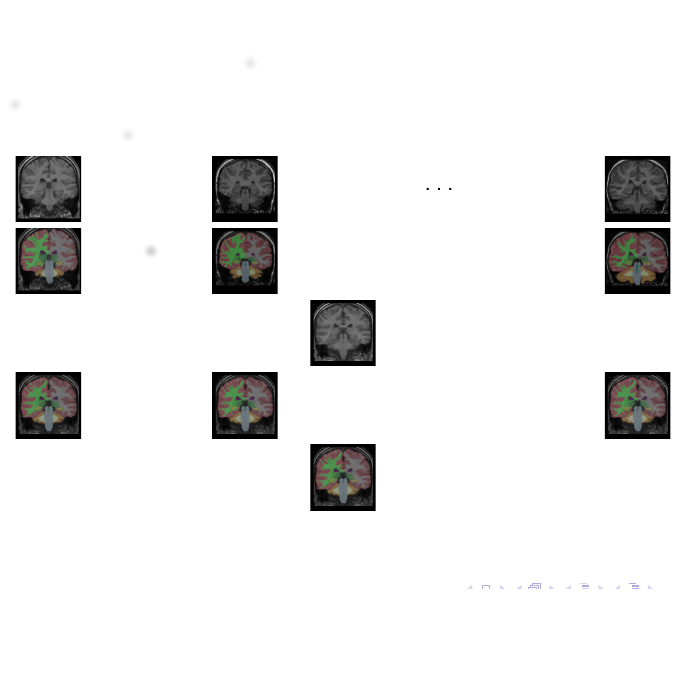Multi Atlas Segmentation Multi atlas segmentation is a powerfull approach that has been successfully used for the segmentation of large variety of medical images. Our goal is to built on this technique to get the best of an atlas database in the minimal computational time. Past results include the method proposed in
In a work in collaboration with CRMBM (Marseille), the influence of voxel anisotropy on the results of atlas based segmentation has been investigated for MR limb images. We showed that for such images, constraining the registration to be inplane but still show across slices (by fixing displacement field in Z to 0) is beneficial to the segmentation. A use of such a registration combined with multi atlas method and with an enhanced dataset allow to obtain segmentation results better than the interoperator variability (but lower than intraoperator variability) with very few atlases.
A paper
The use of machine learning in combination with multi atlas segmentation is a recent trend. We proposed to do the segmentation by placing a multi class classifier (one vs the rest linear SVM in our implementation) in each voxel of the atlas and to feed local descriptors to these classifiers to get the segmentation label. The resulting method has a quality similar to state of the art multi atlas segmentation but the cost of a single standard atlas based segmentation. Compared to similar approaches, our contribution resides in:
- a fast implementation that enable to use these classifier atlas at the cost of a single standard atlas based segmentation,
- the extension of this approach to multi atlas segmentation
- we showed that in the multi atlas case, non local fusion is not necessary and consequently can also be implemented efficiently
A paper

